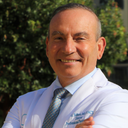Posted underBreast Augmentation q&a
Can I treat breast augmentation scars even are 1 year post-op? (Photo)
I had my breast augmentation surgery 13 months ago and my scars are still red and slightly uncomfortable when I wear underwire bras or tight fitting bikinis. I thought they would be healed by now but I still get itchy sometimes and my scars are very red with what appears to be some type of skin bubble. What can I do?
Answers (28)
From board-certified doctors and trusted medical professionals
More Breast Augmentation Questions
See all Breast Augmentation Q&AWE SEND PRETTY
EMAILS
What’s trending? Who’s turning heads? Which TikTok myths need busting? We’ve got you. No fluff, no gatekeeping—just real talk. Get our free, unfiltered newsletter.









